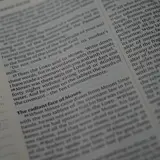The End of the Lemon Test: What Does it Mean for Religious Freedom?

Today’s article examines the legal challenges surrounding a Louisiana law mandating the display of the Ten Commandments in public school classrooms. The law, signed by Governor Jeff Landry, has triggered numerous lawsuits due to concerns that it violates the Establishment Clause of the First Amendment. The Supreme Court's recent decision in Kennedy v. Bremerton, which overturned the long-standing Lemon Test, has shifted the legal framework for evaluating Establishment Clause issues towards a focus on "historical practices and understandings."
The Lemon Test, by the way, is a legal framework established by the U.S. Supreme Court for evaluating whether a government action violates the Establishment Clause of the First Amendment, which prohibits government establishment of religion. It consisted of three criteria: the action must have a secular purpose, its primary effect must neither advance nor inhibit religion, and it must not result in excessive government entanglement with religion. By this standard, if any of these criteria were not met, the action was deemed unconstitutional. The Lemon Test has been a cornerstone in cases involving the separation of church and state, though its relevance and application have obviously become the subject of debate in recent years. This shift presents both opportunities and challenges for the plaintiffs and defendants in the Louisiana case.
The plaintiffs argue that the Louisiana law is unconstitutional, citing religious motivations behind its passage and discriminatory aspects in its implementation. The defendants, however, affirm the historical significance of the Ten Commandments in American education, and point to provisions in the law designed to mitigate potential concerns.
You can read more about this in Education Next, whose article from professor Joshua Dunn, “Thou Shalt Not Display the Ten Commandments in School?,” also explores the potential role of school choice programs as an alternative for parents who object to the Ten Commandments display. A federal district court has issued an injunction blocking the law, but this decision is expected to be appealed, ultimately leading to a Supreme Court ruling that will clarify how to apply the new "history and tradition" framework to Establishment Clause challenges.
There are myriad implications and concerns surrounding the display of the Ten Commandments in classrooms, because doing so touches on sensitive issues like religious freedom and the separation of church and state. While some might view the display as promoting moral values, others may see it as endorsing a particular religion, potentially alienating students from diverse faiths or secular backgrounds. As teachers, we strive to create an environment where all students feel included, and that requires carefully balancing the discussion of ethical principles with respect for cultural diversity. We recommend a thoughtful consideration of these factors, for the sake of an inclusive learning atmosphere.
Are there alternative ways to teach students about historical and ethical concepts that would be less likely to raise constitutional concerns? And how does displaying the Ten Commandments in classrooms align with the principles of secular public education?